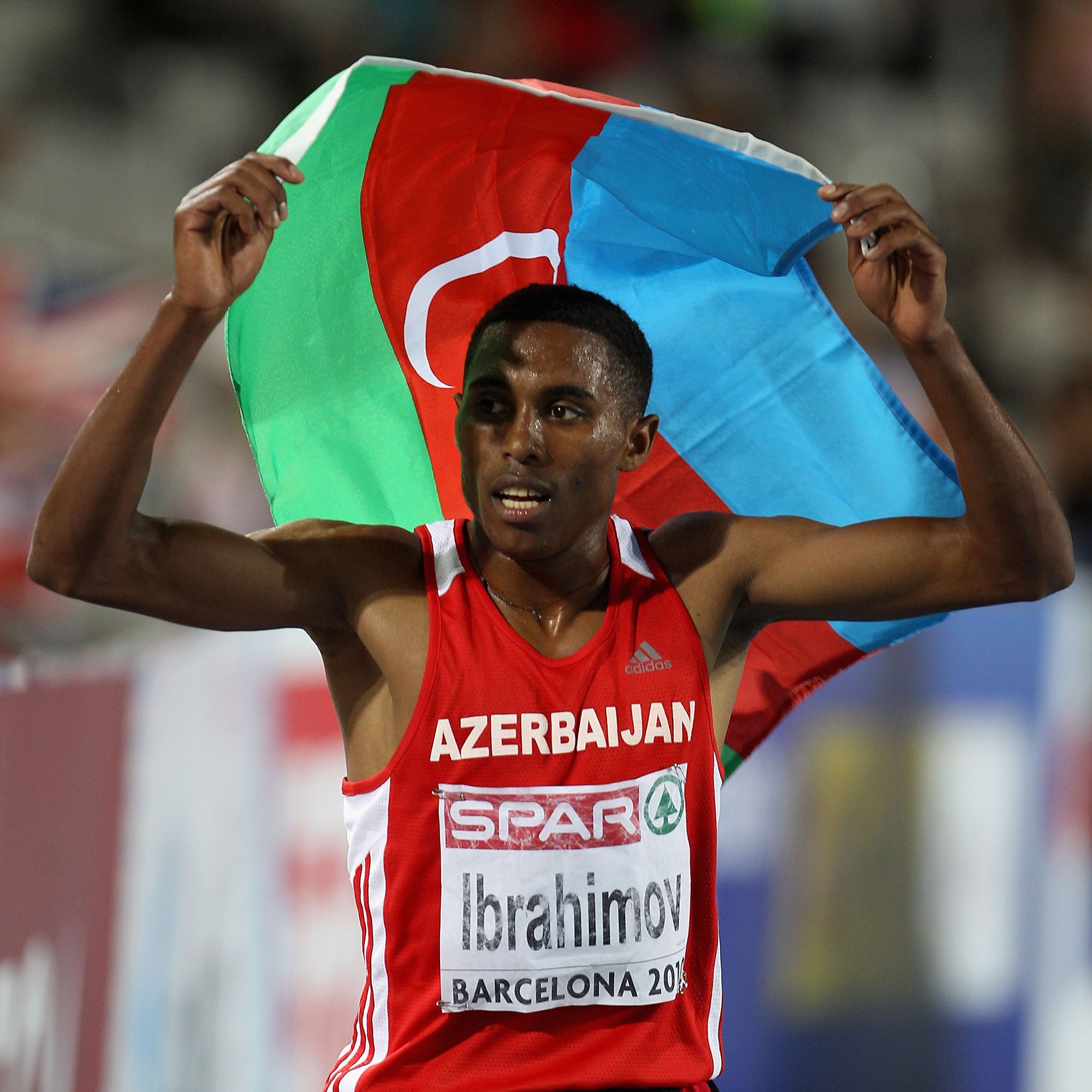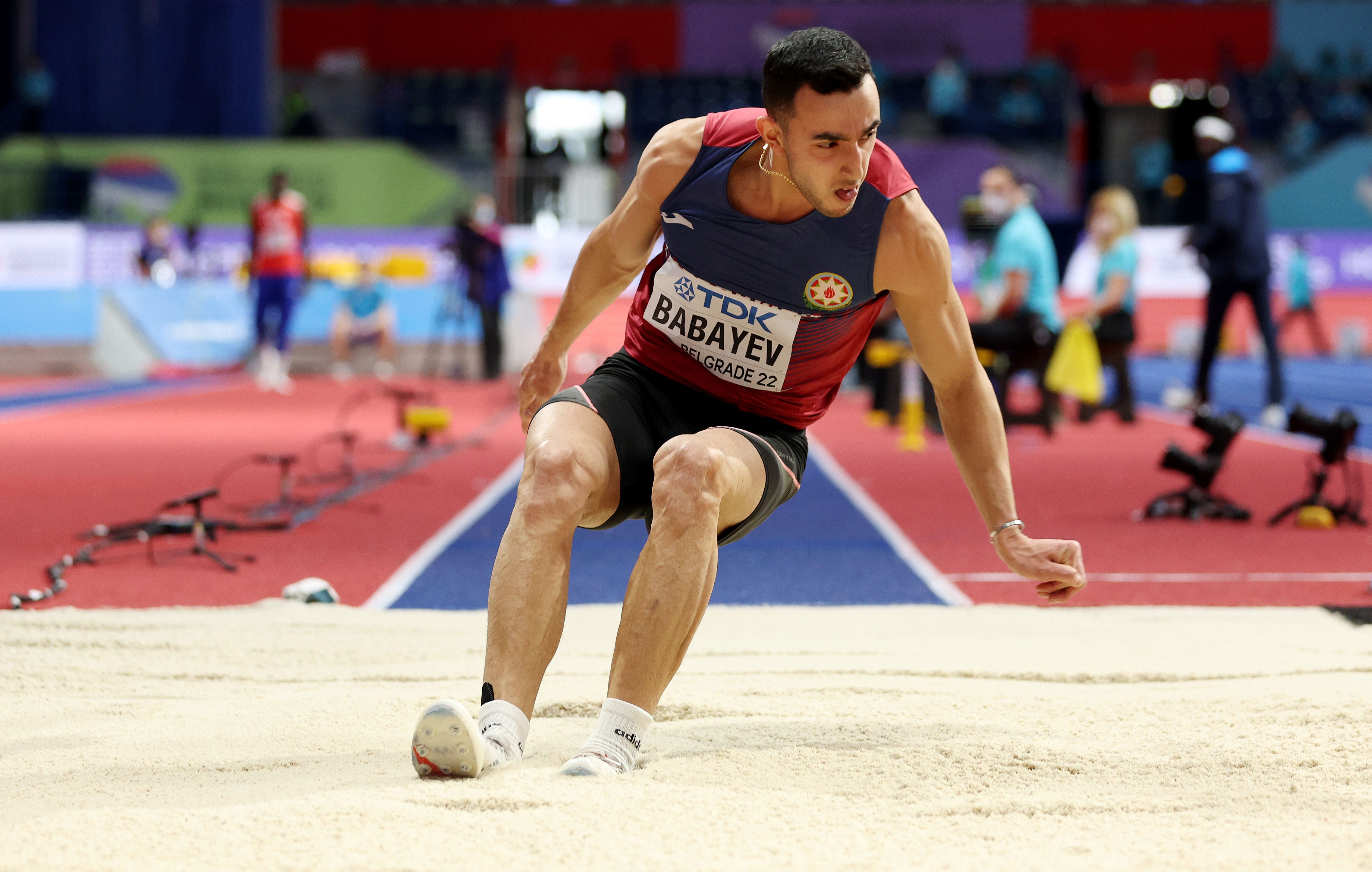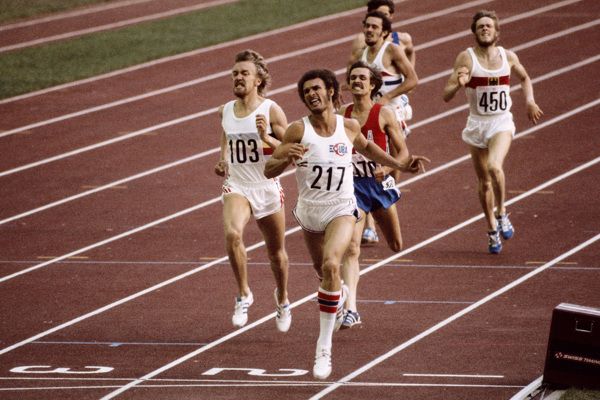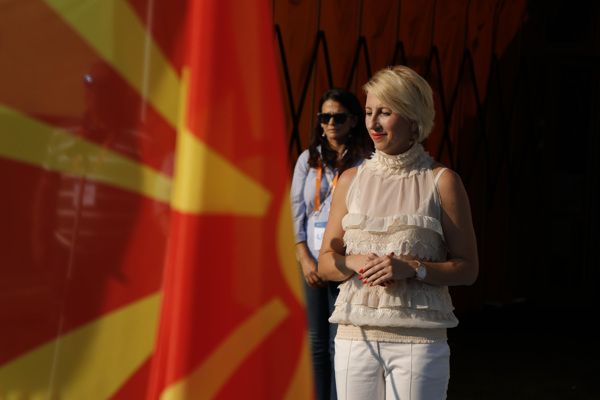Azerbaijani triple jumper Nazim Babayev (© Getty Images)
The Azerbaijan Athletics Federation celebrates its centenary on 1 January 2023, with the first two-thirds of its history over the past 100 years being part of the Soviet Union and then from 1991 as an independent nation.
Prior to becoming part of the Soviet Union, there was little organised athletics to speak of in Azerbaijan even though it was part of the greater Russian Empire until World War I.
However, once what had become Azerbaijan Soviet Socialist Republic was incorporated fully into the Soviet Union in December 1922, it was no coincidence that a national federation was formed within a matter of weeks.
Prior to the USSR entering the Olympic arena for the first time in 1952, athletics in Azerbaijan still struggled for prominence in comparison to the local appetite for sports such as wrestling and shooting. That said, multi-sport clubs existed in the capital Baku and several other cities which hosted athletics competitions.
Nevertheless, Azerbaijani athletes competed in the Soviet athletics championships – which had started in 1920 for men and 1922 for women – especially from the start of the 1930s when Soviet sports authorities placed greater emphasis on competitive sports rather than purely being a way of maintaining health and fitness, and local athletes had the occasional successes on the greater Soviet stage.
Ganeker gets seven Soviet titles
Arguably the first Azerbaijani athletics star was the high jumper Galina Ganeker, who would have probably taken more medals in international competition than her solitary bronze from the 1950 European Championships but for the misfortune of being unable to compete in international championships for the vast majority of her career.
In 1934, just 17 and a member of the Baku Bolshevik Sports Club, Ganeker travelled the 2280 kilometres to Moscow and finished third in the 80m hurdles at the USSR Championships.
Two years later, she improved to second in both the 80m hurdles and high jump and would likely have gone to the 1936 Olympic Games in Berlin had the Soviet Union not boycotted them due to ideological reasons.
The following year she won her first USSR title, taking the 80m hurdles gold before switching her attention principally to the high jump in 1939, winning the first of five consecutive USSR titles in that event; 1939-40, then 1943-1945 as the USSR championships were not held in 1941 and 1942 owing to World War II, which also meant two editions of the Olympic Games were cancelled while she was at the height of her powers.
In 1945, she had led the world lists when she cleared the fourth of her USSR records with a leap of 1.59m in Tbilisi. Despite the emergence of the multi-talented Alexsandra Chudina, Ganeker won her sixth national title in 1948, the year she set her personal best of 1.64m, a performance which would have been good enough to get a medal at the Olympic Games in London had the Soviet Union deigned to accept their invitation from the International Olympic Committee.
Ganeker finally made it to the Olympics as part of the Soviet team sent to Helsinki in 1952 but, at 35, she was past her best and could only finish 11th.
A handful of other Azerbaijani athletes were also part of that inaugural Soviet Olympic team, including Khandadash Madatov whose USSR long jump record had many wondering whether he could challenge for a medal until he had the misfortune to have three no-jumps in the qualifying round.
World record-holder Nyenashev overlooked
During the 1950s and 1960s, there is anecdotal evidence that Azerbaijani athletes were regularly overlooked for Soviet teams going to international championships in favour of their Russian and Ukrainian counterparts, notably in the case of hammer thrower Stanislav Nyenashev.
He had set four of what would now be world U20 records in 1952 and 1953 and was considered one of the great prospects of Soviet athletics. He won the 1953 USSR title as a teenager but was not selected for the 1954 European Championships in the Swiss city of Bern despite being in good form.
The Azerbaijani thrower proved his point on 12 December 1954 when he reached 64.04m in Baku’s Stalin Stadium to deprive Mikhail Krivonosov of his world record but was fated never to represent the USSR in an international competition.
Konovalov the first Olympic medallist
At the Melbourne 1956 Olympic Games, Yuriy Konovalov got Azerbaijan’s first Olympic medal – albeit in the famous red vets of the Soviet Union – when he ran the third leg on a well-drilled Soviet quartet that took the men’s 4x100m silver medal.
Konovalov, having won USSR 100m and 200m titles in between his two Olympic appearances, fulfilled the same role in Rome four years later with the USSR again taking the silver medals in the sprint relay.
Azerbaijan’s next Olympic athletics medal also came in the 4x100m with Aleksandr Kornelyuk, a super-quick starter who had memorably beaten the reigning European 100m champion Valery Borzov to the Soviet 100m title in 1970, running the opening leg on the USSR 4x100m team that finished second behind the USA world-record setters at the 1972 Games in Munich.
Kornelyuk also won medals at the 1972 and 1974 European Indoor Championships, with 50m silver and 60m bronze in those respective years.
After a spate of medals of other hues, the first major international triumph for an Azerbaijani athlete came at the 1979 European Indoor Championships in Milan when Vladimir Tsepelev – who the previous summer had won the USSR title in Tbilisi with a still-standing national record of 8.03m – won the long jump gold with 7.88m.
However, Azerbaijan’s status as being somewhat on the periphery of Soviet athletics was underlined by the fact that in more than 70 years, the USSR Championships was not once staged in the regional capital Baku.
Success as an independent nation
Turn the clock forward more than a decade and after the breakup of the Soviet Union, upon independence in 1991, Azerbaijan joined what was then the International Amateur Athletics Federation as part of the Asian Athletics Association. But being lodged in Asia was an uncomfortable fit for Azerbaijan and in 1999 the country became the most easterly member federation of European Athletics.

Hayle Ibrahimov at the 2010 European Championships (© Getty Images)
Although they have yet to get a medal at the Olympics or World Athletics Championships, Azerbaijani athletes have made their presence felt internationally on a regular basis over the past dozen years.
Distance runner Hayle Ibrahimov led the way. After advertising his talent with a 5000m and 10,000m double at the 2009 European U20 Championships, he got 5000m bronze at the 2010 European Championships and then a silver over the same distance four years later. Into the bargain, 34 years after Tsepelev’s long jump victory, Ibrahimov won the 2013 European indoor 3000m title.
There has also been podium success for Azerbaijani women with Layes Abdullayeva taking 2011 European indoor 3000m bronze and hammer thrower Hanna Skydan getting a similar medal in her specialist event at the 2016 European Championships, with the latter also winning at the 2015 World University Games.
However, horizontal jumps seem to be something of an Azerbaijani speciality with their historic prowess and successes over the last decade in the triple jump.

Nazim Babayev at the World Indoor Championships in Belgrade (© Getty Images)
Alexis Copello – who had just missed a medal when he finished fourth at 2018 World Indoor Championships – took silver at the 2018 European Championships and then barely six months later Nazim Babayev won European indoor gold in the same event in Glasgow. With firstly the European Athletics Indoor Championships in March, and then the World Athletics Championships Budapest 23, both men have targeted these championships to add to Azerbaijan’s international standing in athletics.
Phil Minshull for World Athletics Heritage








